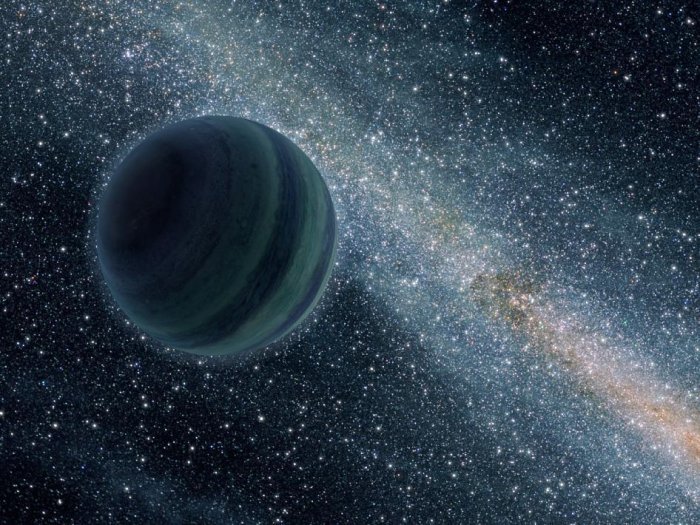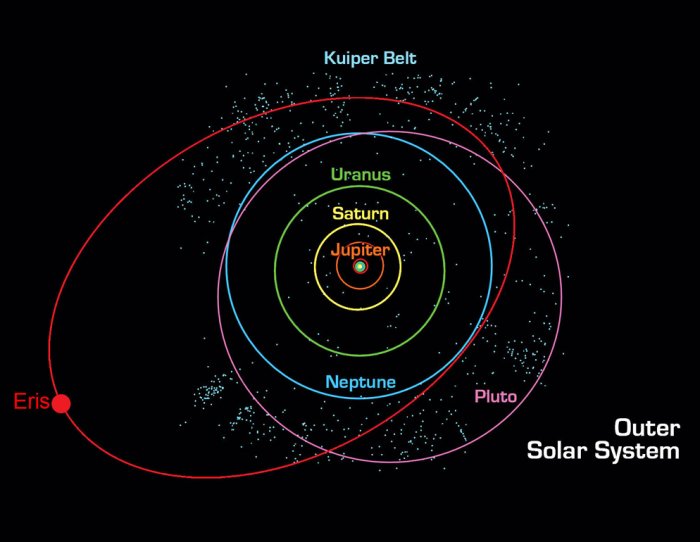New Evidence Of Planet 9 – Unknown Planet Ten Times Larger Than Earth Is Lurking Beyond Pluto
MessageToEagle.com – Last year astronomers announced they had found evidence for a planet 10 times more massive than Earth in the far outer solar system, orbiting about 20 times farther from the sun than distant Neptune does.
The mythical “Planet X” may actually be real, and scientists are calling it “Planet Nine.” A new study shows something massive is orbiting beyond Pluto.
Spanish astronomers have used a novel technique to analyze the orbits of the so-called extreme trans-Neptunian objects and, once again, they point out that there is something perturbing them: a planet located at a distance between 300 to 400 times the Earth-Sun separation.
Scientific Disagreement Whether Planet 9 Exists Or Not
Meanwhile, scientists continue to argue about the existence of a ninth planet within our Solar System.
Previous calculations supporting the theory Planet 9 does exists, were motivated by the peculiar distribution of the orbits found for the trans-Neptunian objects (TNO) of the Kuiper belt, which apparently revealed the presence of a Planet Nine or X in the confines of the Solar System.

However, scientists from the Canadian-French-Hawaiian project OSSOS detected biases in their own observations of the orbits of the TNOs, which had been systematically directed towards the same regions of the sky, and considered that other groups, including the Caltech group, may be experiencing the same issues.
According to these scientists, it is not necessary to propose the existence of a massive perturber (a Planet Nine) to explain these observations, as these are compatible with a random distribution of orbits.
See also:
Was Mysterious Planet 9 Stolen By Our Sun 4.5 Billion Years Ago?
Planet X: Four Candidates For Planet X Located And Examined
The Kuiper Cliff Mystery – Why Does The Kuiper Belt Suddenly End?
Now, however, two astronomers from the Complutense University of Madrid have applied a new technique, less exposed to observational bias, to study a special type of trans-Neptunian objects: the extreme ones (ETNOs, located at average distances greater than 150 AU and that never cross Neptune’s orbit).
For the first time, the distances from their nodes to the Sun have been analyzed, and the results, published in the journal ‘MNRAS: Letters’, once again indicate that there is a planet beyond Pluto.
Like The Comets That Interact With Jupiter
“If there is nothing to perturb them, the nodes of these extreme trans-Neptunian objects should be uniformly distributed, as there is nothing for them to avoid, but if there are one or more perturbers, two situations may arise,” explains Carlos de la Fuente Marcos, one of the authors.
“One possibility is that the ETNOs are stable, and in this case they would tend to have their nodes away from the path of possible perturbers, he adds, but if they are unstable they would behave as the comets that interact with Jupiter do, that is tending to have one of the nodes close to the orbit of the hypothetical perturber.”
Is There Also A Planet Ten?
De la Fuente Marcos explains that the hypothetical Planet Nine suggested in this study has nothing to do with another possible planet or planetoid situated much closer to us, and hinted at by other recent findings.
Also applying data mining to the orbits of the TNOs of the Kuiper Belt, astronomers Kathryn Volk and Renu Malhotra from the University of Arizona (USA) have found that the plane on which these objects orbit the Sun is slightly warped, a fact that could be explained if there is a perturber of the size of Mars at 60 AU from the Sun.

“Given the current definition of planet, this other mysterious object may not be a true planet, even if it has a size similar to that of Earth, as it could be surrounded by huge asteroids or dwarf planets,” explains the Spanish astronomer, who goes on to say: “In any case, we are convinced that Volk and Malhotra’s work has found solid evidence of the presence of a massive body beyond the so-called Kuiper Cliff, the furthest point of the trans-Neptunian belt, at some 50 AU from the Sun, and we hope to be able to present soon a new work which also supports its existence.”
MessageToEagle.com
Expand for references









